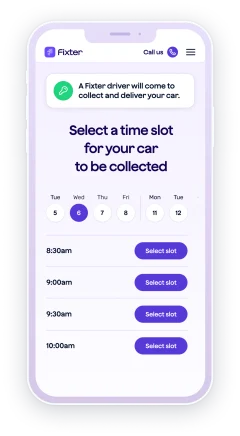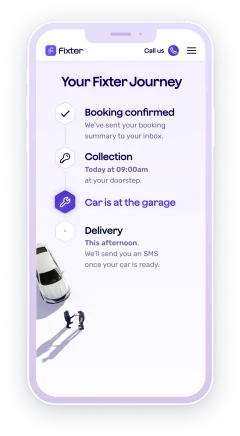A Beginner's Guide to Using a Trickle Charger: Keep Your Batteries in Prime Condition
Keeping your vehicle's car battery in optimal condition is crucial for ensuring reliability and longevity, particularly in the colder months when batteries are prone to losing charge. Enter the trickle charger, a nifty device that can be a lifesaver for those wanting to maintain their battery's health without frequent replacements. Unlike standard chargers that deliver a rapid boost, trickle chargers provide a slow, steady charge that can safely be left connected for extended periods. This guide will walk you through the basics of using a trickle charger, demystifying the process and offering helpful tips to keep your battery in top-notch condition. Whether you're a seasoned driver or a novice, understanding how to use this handy tool can save you time, money, and the hassle of a flat battery.

Introduction to Trickle Chargers
Understanding what a trickle charger is and why it matters is the first step to maintaining a healthy battery. This section introduces the concept of battery conditioner trickle charging and its importance for vehicle battery maintenance.
What is a Trickle Charger?
A trickle charger is a device designed to charge a battery slowly over time. Unlike conventional battery chargers that deliver a high current to quickly recharge lead acid batteries , trickle chargers provide a low-level current. This slow charging process helps maintain the battery's charge without overcharging, making it perfect for batteries that are not in constant use.
Trickle chargers are particularly beneficial for vehicles stored for extended periods, like classic cars or motorcycles. They prevent the battery from losing its charge due to inactivity, ensuring the vehicle is ready to go when needed. Moreover, the gentle charging process extends the battery's life by avoiding the stress of rapid charging cycles.
Most trickle chargers come with built-in safety features to prevent overcharging. This makes them a reliable choice for those who want to maintain their batteries without constant monitoring. Using smart trickle chargers can be a simple yet effective way to ensure your battery remains in prime condition.
Importance of Maintaining Battery Health
Maintaining a battery healthy is crucial for the longevity and reliability of your vehicle. A well-maintained battery ensures that your vehicle starts reliably, especially in cold weather when battery performance can dip. Regular maintenance can prevent unexpected breakdowns and extend the life of the battery.
A healthy battery reduces the risk of being stranded due to a flat battery. This is particularly important for those who rely heavily on their vehicle to avoid a dead battery for daily tasks. Regular charging and maintenance are essential to avoid the inconvenience and cost of emergency replacements.
Moreover, maintaining battery health contributes to the overall efficiency of the vehicle. A battery in good condition supports optimal performance of all electronic systems, leading to a smoother and more efficient driving experience.
Routine checks and maintenance can help identify potential issues before they become major problems. This proactive approach can save money and time in the long run by preventing damage and extending the battery's lifespan.
How Trickle Chargers Work
This section delves into the mechanics of trickle chargers. Understanding how these devices function and their essential components can help in choosing and using them effectively.
The Science Behind Trickle Charging
Trickle charging involves the continuous supply of a small amount of current to keep the battery fully charged without overcharging. This process is also known as float charging because it maintains the battery's voltage at full charge without causing damage.
The charger monitors the battery's charge level and adjusts the current accordingly. This ensures that the battery remains at its optimal charge level, preventing sulphation—a common cause of battery failure due to prolonged discharge.
The science of trickle charging is based on maintaining a balance between charging and discharging. By providing just enough amperage to counteract the natural discharge of the battery, trickle chargers help maintain the charge without the risk of overcharging.
Trickle chargers are designed to be left connected for long periods. This makes them ideal for maintaining a battery's charge when the vehicle is not in use, ensuring that it remains ready to start whenever needed.
Key Components and Features
Trickle chargers come with various components and features that enhance their functionality. Understanding these can help in selecting the right charger for your needs.
Automatic shut-off is a crucial feature, preventing overcharging by switching the charger off when the battery is fully charged. This ensures safety and prolongs the battery's life.
Many trickle chargers include reverse polarity protection, which prevents damage if the connections are accidentally reversed. This feature safeguards both the battery and the charger from potential harm.
Another important feature is LED indicators or digital displays that show the charging status. These indicators provide real-time feedback, making it easier to monitor the process and ensure that the battery is charging correctly.
Finally, some advanced models come with temperature sensors that adjust the charging rate based on ambient temperature. This ensures optimal performance in varying conditions, further enhancing battery maintenance.
Choosing the Right Trickle Charger
Selecting the right trickle charger involves considering various factors and comparing popular options. This section offers guidance on making an informed choice.
Factors to Consider
When choosing a trickle charger, it's essential to consider several factors to ensure compatibility and effectiveness. The first factor is the battery type. Different batteries, such as lead-acid or lithium-ion, may require different charging methods.
Another crucial consideration is the charger's output current. It's important to select a charger that matches your battery's specifications to prevent undercharging or overcharging. Always check the manufacturer's recommendations for the appropriate current level.
Safety features are also paramount. Look for chargers with automatic shut-off, reverse polarity protection, and short circuit protection as per the manufacturer's instructions to ensure both user and battery safety.
Lastly, consider ease of use and portability. A compact and user-friendly design can make the charging process simpler and more convenient, especially if you need to move the charger between different vehicles.
Popular Trickle Charger Brands
There are several well-known brands in the market that offer reliable trickle chargers. Understanding their features and benefits can aid in making a decision.
CTEK is a popular brand known for its smart chargers that offer a range of features, including automatic temperature compensation and multi-stage charging. These chargers are designed for both novices and experienced users.
NOCO is another leading brand offering versatile chargers with advanced safety features. Their models often include user-friendly interfaces and are compatible with various battery types, making them a favourite among many car enthusiasts.
Battery Tender is renowned for its durable and reliable trickle chargers. Their products often include LED indicators for easy monitoring, making them a convenient choice for those wanting simplicity without sacrificing quality.
Schumacher offers a range of affordable yet effective trickle chargers. Known for their robust build and reliable performance, they are a good option for those on a budget without compromising on essential features.
Step-by-Step Guide to Using a Trickle Charger
Effectively learning how to use a trickle charger involves preparation and careful execution of the charging process. This section provides a structured guide to ensure safe and effective usage.
Preparing Your Battery and Charger
Before starting, it's important to properly prepare both the battery and the charger. This ensures a safe and efficient charging process.
Inspect the Battery: Ensure the battery is clean and free from corrosion. Remove any dirt or debris that could interfere with the charging process.
Read the Manual: Familiarise yourself with the charger's instructions and safety guidelines. This will help prevent errors and ensure optimal use.
Ensure Proper Ventilation: Place the battery in a well-ventilated area to avoid the accumulation of gases that can be emitted during charging.
Check Connections: Ensure all connections are clean and secure. Loose or corroded connections can lead to inefficient charging or safety hazards.
Select the Correct Settings: Adjust the charger settings according to the battery type and manufacturer's recommendations.
Safe and Effective Charging Process
Following a structured process ensures the battery is charged safely and efficiently. Here is a step-by-step guide:
Connect the Charger: Attach the positive lead to the positive terminal of the battery and the negative lead to the negative terminal. Ensure there are no loose connections.
Set the Charger: Turn on the charger and set it to the appropriate mode based on your battery's requirements.
Monitor the Charging Process: Keep an eye on the charger indicators to ensure everything is proceeding smoothly. Modern chargers often provide real-time feedback.
Finish Charging: Once the battery is fully charged, the charger will typically shut off automatically. If not, turn off the charger manually.
Disconnect Safely: Remove the charger leads in reverse order, starting with the negative lead to prevent any sparks or short circuits.
Tips for Optimal Battery Maintenance
Optimal battery maintenance involves regular upkeep and troubleshooting to prevent issues. This section provides practical tips and solutions for common problems.
Regular Maintenance Practices
Routine maintenance is key to extending the life of your battery. Here are some regular practices to keep in mind:
Charge Regularly: Keeping the battery charged prevents sulphation and ensures it is always ready for use.
Clean Terminals: Regularly clean the battery terminals to prevent corrosion, which can hinder performance.
Check Fluid Levels: For batteries with removable caps, check and maintain electrolyte levels to ensure optimal operation.
Inspect for Damage: Regularly inspect the battery for any signs of damage or wear and address issues promptly.
Troubleshooting Common Issues
Even with regular maintenance, issues can arise. Here's how to handle some common problems:
Battery Not Charging: Check connections and charger settings. Ensure there is no corrosion interfering with the charging process.
Overheating: Ensure the battery is in a well-ventilated area and that the charger settings are correct.
Shortened Battery Life: Evaluate your charging habits and ensure the battery is not being discharged excessively or left unused for long periods.
By following these maintenance practices and troubleshooting tips, you can ensure your battery remains in top condition, providing reliable performance when you need it most.








